This Week’s Guest Blogger is Ashley Walker who writes all about Nature’s Rainbow, a business he runs with his wife that produces natural dyes
With my wife Susan we run a small natural dye business called Nature’s Rainbow. Our activities include selling dye plant seed, running natural dye workshops and giving talks. We have a small half allotment plot dedicated to growing dye plants which we use ourselves for various craft projects and also to provide dyes for our workshops.
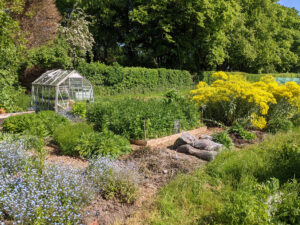
The Nature’s Rainbow Dye Garden in April
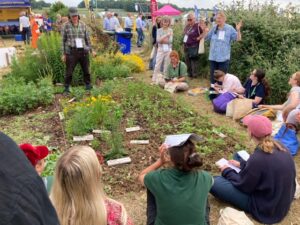
Ashley (on garden) and Susan (in light blue top on right) giving a talk on dye plants at the Groundswell regenerative agriculture festival in 2023
I am not a qualified gardener or horticulturalist but I was for a number of years a qualified Social and Therapeutic Horticulture therapist. Note that the Social part comes first, because that is the most important bit! I don’t want to go into too much detail as the subject is massive but basically I helped people to get some control and meaning in their lives through gardening. I specialised in helping people with mental health problems. One of the most healing things you can do is talk about your problems with an understanding colleague but this is not always easy. Joining someone else in the activity of gardening gives you a fall back activity if the talk is not going well. In this way trust is forged as the details of gardening prevent the therapist / client relationship from becoming unequal. Of course there is a great deal more to it than that and much research has been done that shows a green environment is beneficial to wellbeing.
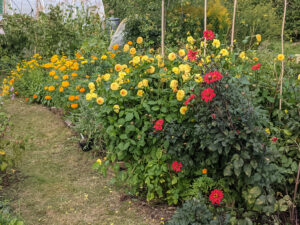
Dahlias, African Marigolds and Coreopsis lanceolata
Plants are usually grown for a number of reasons chiefly for food, to provide an aesthetic environment and as herbs. Dye plants are herbs in that they are used to colour textiles and produce pigments for paint or inks. In the past all textiles and fibres were coloured using natural dyes but with the invention of synthetic dyes the natural dye industry all but disappeared. However, today there is a resurgence going on and we like to think we have helped that happen particularly in the world of social and horticultural therapy.
What all people seek is meaning and control without which our lives can fall into helplessness and depression. Growing dye plants in a social situation gives the gardener something new and rather special – a way of bringing colour into the world via living things rather than as a trip to a shop to buy a box or tube of synthetic pigment made in a chemical factory. Growing your own colour gets you outside, connecting with the living environment and encouraging bees, pollinators and other wildlife.
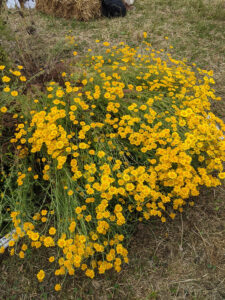
Dyer’s Chamomile (Cota tinctoria)
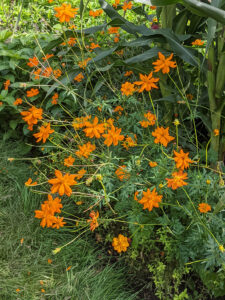
Cosmos sulphureous
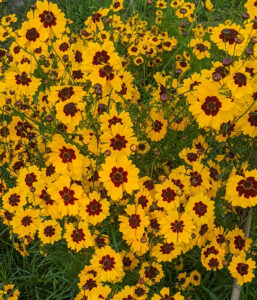
Dyer’s Coreopsis (Coreopsis tinctoria)
Many dyes are obtained from flowers; buttery Dyers Chamomile, rich yellow and red Dahlia, fluorescent orange Cosmos sulphureous and startling red and yellow Coreopsis blooms. So you can grow a useful crop and have a stunning flower garden at the same time. With just a few plants you can obtain all the colours of the rainbow. Many of the dyes obtained are as permanent as synthetics so it’s possible to make dyed items that can last for generations. When so many people are falling through societies safety net because they cannot find meaningful occupation, growing dye plants as part of a therapy project is something that can be done. The fact that we have been able to help so many projects to get started with their dye garden adventure is testimony to the need out there.
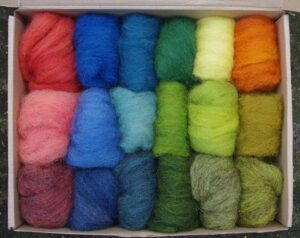
With just a few plants you can obtain all the colours of the rainbow
If you would like to set up a dye garden and are part of a community or social and therapeutic project then contact us and we may be able to help.

Ashley in madder dyes jumper
